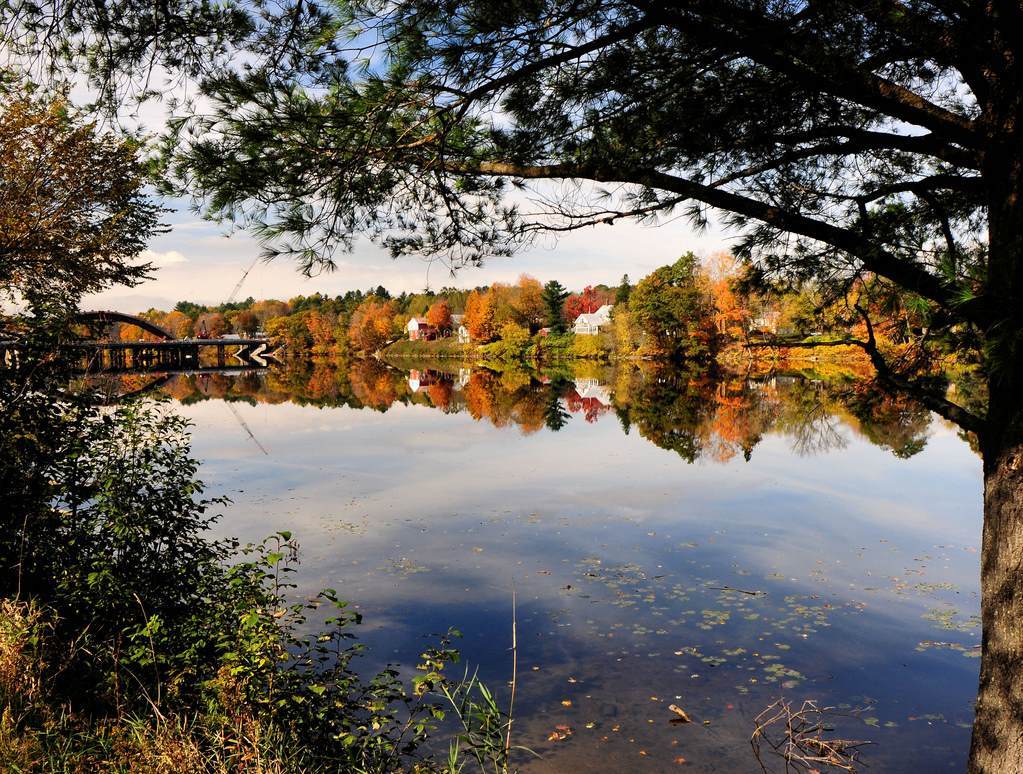On This Day in History -
October 2, 1775
Benedict Arnold passes Norridgewock Falls
On this day in history, October 2, 1775, Benedict Arnold's Quebec Expedition passes over Norridgewock Falls at the site of present day Norridgewock, Maine. Arnold's expedition was part of the Continental Army campaign to capture Canada from the British at the beginning of the American Revolution.
Congress approved of the Quebec Campaign in May of 1775 and sent General Philip Schuyler to lead a large American force up Lake Champlain to Montreal and then to the capital, Quebec City. Colonel Benedict Arnold was offended for being overlooked for command of the expedition. He came up with a plan to send an additional force across the wilderness of Maine to take Quebec City from the east. He presented his plan to George Washington and the plan was approved.
Arnold left Cambridge with about 1,100 soldiers in September. It was easy to find recruits since the siege of Boston was mostly uneventful and many soldiers were anxious for action. The group was ferried north to the Kennebec River and began sailing up the river in small boats called barques.
Arnold had a map of the area that indicated the journey would be about 180 miles. In reality, it was 350 miles over rough terrain and dense evergreen forests, much of which was uninhabited. When falls or rough patches in the rivers and lakes were reached, the troops were forced to carry their boats and supplies. In this manner they moved across the wilderness from river to lake to pond to stream.
On October 2, the troops reached Norridgewock Falls, the last inhabited area along the river for hundreds of miles. Beyond this point, there would be no more inhabitants from which to buy food.
By the end of October, the expedition's supplies were running out. Supplies were either eaten or lost in boating accidents on the rough waters. Snow covered the ground, rivers were freezing cold and many were walking on bare feet or with thin moccasins. The men were reduced to eating dogs, shoe leather, bark and candle wax. Many died and others deserted, including a large group of 350 who returned to Massachusetts with Lieutenant Colonel Roger Enos, who was later court-martialed for the departure.
By early November, about 600 of the original 1100 arrived at the southernmost French settlements of Quebec and the remaining soldiers were saved from starvation. The expedition continued on toward Quebec and crossed the St. Lawrence River on November 13th. They attempted a siege of the city, but couldn't keep it up because they were fatigued, outnumbered and without ammunition after it was mostly lost during the trip.
Instead, the expedition waited for the arrival of General Richard Montgomery from the south. Montgomery had replaced General Schuyler and successfully captured Montreal. Montgomery and Arnold then attempted to capture Quebec City on the evening of December 31st. The battle ended in failure with Montgomery being killed and Arnold severely wounded. The siege of the city continued until spring, however, when the mission was finally called off and the troops returned to Ticonderoga.
- Read what happened on other days in American history at our On This Day in History section here
This Week in History
- October 2, 1775 - Benedict Arnold passes Norridgewock Falls
- October 3, 1789 - George Washington's Thanksgiving Proclamation
- October 4, 1777 - The Battle of Germantown
- October 5, 1775 - Congress informed of Dr. Benjamin Church's treason
- October 6, 1777 - The Battle of Forts Montgomery and Clinton
- October 7, 1780 - The Battle of Kings Mountain
- October 8, 1778 - William Butler raids Onaquaga and Unadilla
Published 10/2/13
Return to top of Benedict Arnold passes Norridgewock Falls
Revolutionary War and Beyond Home
Like This Page?
© 2008 - 2022 Revolutionary-War-and-Beyond.com Dan & Jax Bubis












Facebook Comments